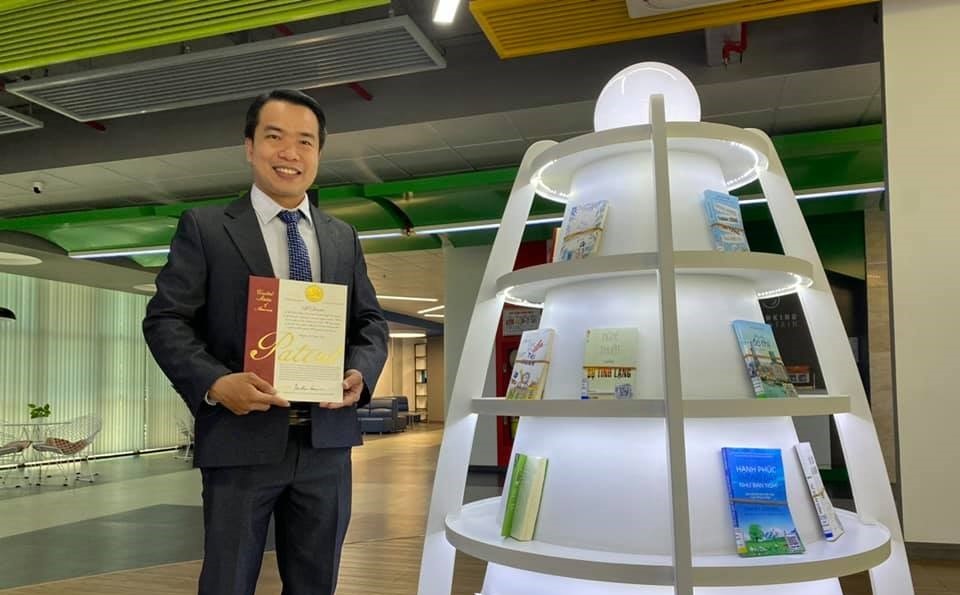The 8th USPTO Patent of Ton Duc Thang University
In 2016, after graduating Ph.D. in Korea and returning to Vietnam to work at the Institute for Computational Science, Ton Duc Thang University (TDTU), Dr. Do Hoang Thinh realized that some organic waste can be treated to provide nutrients for plants.
With professional knowledge and passion for technology, Dr. Thinh has studied the model of growing and fertilizing trees with organic waste. In 2017, on the occasion of the 20th anniversary of TDTU’s establishment, a small closed ecosystem model called Greentower was born. This system has just been patented by the United States Patent and Trademark Office (USPTO) which is the 8th US patent of TDTU.
Dr. Do Hoang Thinh explained that the classification of waste and waste treatment from the source is extremely important and necessary. In terms of biochemistry, waste is divided into two categories including organic waste and inorganic waste. When classified separately, organic waste has a fast decomposition time and simple handling process, while inorganic waste takes several decades to a few hundred years to be fully decomposed. If these two types of trash are mixed together, the organic waste will slowly decompose, produce a bad smell, and cause environmental pollution. It’s difficult for the recycling process when the organic waste is mixed with inorganic waste and this leads to a range of impurities in recycled products.
This invention gives the ability to decompose organic waste of earthworms, creating a small closed organic waste treatment process, with the input material in its waste in the household and the main output is clean edible vegetables.
Therefore, this invention encourages users, especially housewives, to voluntarily sort and process a portion of their waste right from their homes. As a result, the process of waste treatment after being collected to the factory will be more convenient.
In addition, this invention is a small closed ecosystem model, which can be used in the learning and research of students.
The idea of this invention emerged from practical observations. Every day, a lot of waste such as fruit peels, vegetable roots or broken foods, and some others are often put in the trash can, while they still have nutritional value as food for plants after being properly disposed of. With knowledge of technology, Dr. Thinh has researched and manufactured a real model, controlling and monitoring the parameters of the soil environment such as temperature, humidity, etc. via smartphone. As a result, the Greentower model was born.
The GreenTower model can automatically turn the pump on and off to water when the soil moisture is below the set threshold. At night, GreenTower automatically turns on the lights when needed. Moreover, GreenTower uses solar power, so it does not need to connect to the grid electricity.
According to Dr. Do Hoang Thinh, this invention has a high commercialization capacity. However, it will be a long way with many important factors for inventions to become products to users, including the interest of enterprises with the common goal of protecting the environment.

Dr. Do Hoang Thinh with the USPTO Patent
- Log in to post comments
